Friends of Rutgers Astronomy
Are you a member of the
general public who is interested in learning more about astronomy
(and/or about the research and education activities of astronomers
at Rutgers specifically)? We've set up a web page just for you
here.
|
Graduate Opportunities in Astrophysics Thinking of applying
to grad school? Check out the possibilities for astronomy at Rutgers
here.
|
Undergraduate Research Opportunities in Astrophysics Several
professors are seeking undergraduates to help with their research. Go
to this
website for a list of currently available projects and instructions
on how to apply.
|
Active Research |
 |
Rutgers is a founding member of the Southern African Large Telescope
(SALT) constortium. SALT is the world's largest single visible-light telescope.
More
|
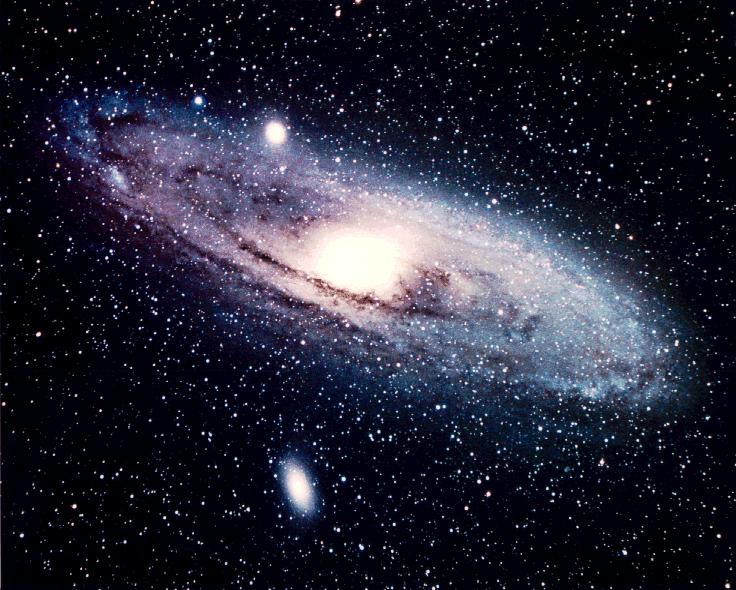 |
Rutgers astronomers are on the cutting edge of developing new
theoretical models of galaxy formation and evolution.
More
|
Rutgers astronomers are co-investigators, developing and operating
the Atacama Cosmic Telescope in Chile, a 6 meter microwave telescope
to measure the faint glow from the Big Bang.
More
| 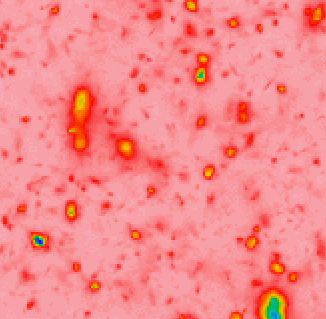 |
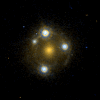 |
Modeling of Gravitational Lensing is a prime focus of Rutgers
astronomer, Chuck Keeton. A lens is formed when the light from distant QSOs
are bent by galaxies or clusters of galaxies.
More
|
|
Rutgers is a consortium member of LSST, the Large Synoptic
Survey Telscope.
More
| 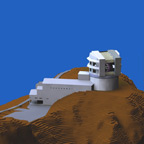 |
Observer and professor, Andrew Baker studies galaxy morphology and
molecular gas in the nuclei of galaxies at microwave and infrared wavelengths,
using a wide range of space-borne and ground-based observatories.
More
|
 |
|
|
News & Special Announcements
|
|
In light of recent reports within the larger academic community,
the Astrophysics Group has issued a
statement opposing discrimination and harassment and offering our
support to anyone in speaking out about unprofessional behavior,
discrimination, or harassment that they have experienced or witnessed
here at Rutgers or elsewhere.
|
|
Professor Eric Gawiser has been named a 2018 Fellow of the
American Physical Society for "exceptional leadership in the study
of galaxy evolution and cosmology."
|
|
Professor Saurabh Jha has received the 2018
School of Arts and Sciences Award for Distinguished Contributions
to Undergraduate Education at the Full Professor rank.
|
|
Elaad Applebaum, working with Assistant Professor Alyson
Brooks, has been awarded a Blue Waters Fellowship from the
National Center for Supercomputing Applications to be held during
the 2018-19 academic year.
|
|
Humna Awan, working with Professor Eric Gawiser, has won
an inaugural Fellowship of Excellence In Computational and Data Science
to be held during the 2017-18 academic year.
|
|
Graduate student Jesse Rivera participated in the 2017
Congressional Visit Day. His account of the day was
posted
by the American Astronomical Society.
|
|
Assistant Professor Alyson Brooks has received the 2017
School of Arts and Sciences Award for Distinguished Contributions
to Undergraduate Education at the Assistant Professor rank.
|
|
Assistant Professor Alyson Brooks has been named as a
2015 Sloan Fellow with a grant to support her work on galaxy formation.
|
|
Associate Professor Saurabh Jha has shared the 2015
Breaktrough
Prize in Fundamental Physics, for his role in the Supernova
Cosmology collaboration.
|

 |
|
Two terms of physics and one of astronomy were required of all students
through the 1800's. George William Hill (A.B. 1859, A.M. 1862, Ph.D. 1873)
went on to do fundamental work in celestial mechanics. He was the
most illustrious astronomy graduate of this period, becoming a member
of the National Academy of Science, of the Royal Astronomical Society
(Gold medal), and a Fellow of the Royal Society (Copley medal),
among other honors. |
|
Though the university purchased a telescope as early as 1827, the
first observatory
on the Rutgers campus, shown to the right, dates back to 1866. The
primary instruments were a 6.5-inch refracting telescope and a meridian
circle with a 4-inch telescope. |
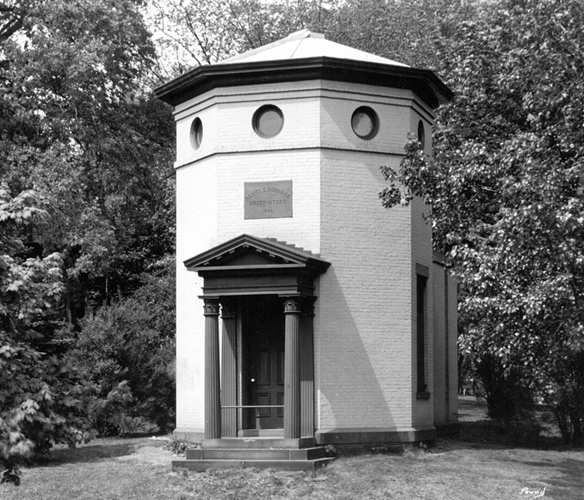 |
|
Robert Atkinson, on the faculty from 1929 to 1937, did early work on
nuclear fusion as the source of energy in stars and on stellar nucleosynthesis.
With his departure, work in astrophysics lapsed until the 1970's.
More history.
|
Astrophysics in the 21st Century
The number of faculty and researchers in the group doubled in the late 90's.
Today, Rutgers astrophysicists use a variety of space borne observatories,
including the Hubble Space Telescope (HST) and Chandra X-ray
Observatory, as well as world-class ground-based facilities. Researchers
and students work across the electromagnetic spectrum from radio and
submillimeter, to infrared and visible, to ultraviolet and X-ray wavelengths,
including playing key roles in the development of new instruments.
|
|
Rutgers has strong programs in theoretical astrophysics, especially in
the large-scale structure of the universe and in the formation and evolution
of galaxies. |
 |
|
Last Revised
Jan 11, 2019 |
Copyright (c) 2009 Rutgers, The State University of New Jersey
Department of Physics & Astronomy,
136 Frelinghuysen Rd, Piscataway, NJ 08854
|
|
|





